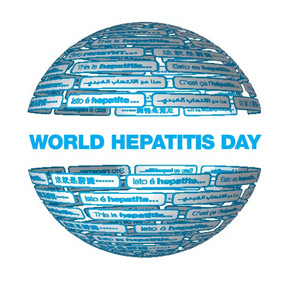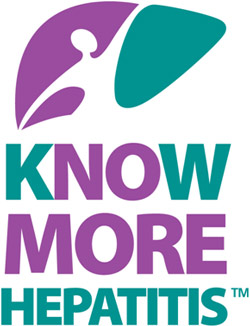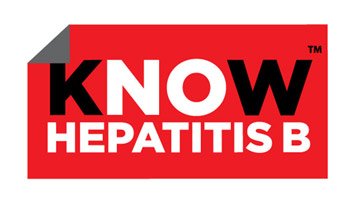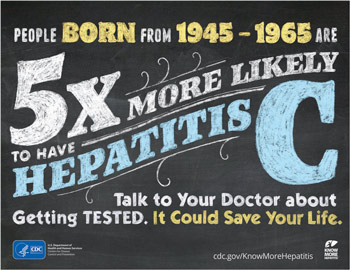
World Hepatitis Day

NOhep is a global movement made up of those working in the field of hepatitis and others from around the world who have united around one common purpose: eliminating viral hepatitis by 2030.
Launched on World Hepatitis Day (28 July 2016), it aims to bring people together and activate individuals and organizations to make change happen at a global and national level.
It contains a goal of reaching and mobilizing 380 million people by 2030, the number of people infected, to make the elimination of viral hepatitis our next greatest achievement.
For more information about NOhep, visit: www.NOhep.org or WorldHepatitisDay.org
About Hepatitis
“HEPATITUS” means inflammation of the liver. The liver is a vital organ that processes nutrients, filters the blood, and fights infections. When the liver is inflamed or damaged, its function can be affected. 
Heavy alcohol use, toxins, some medications, and certain medical conditions can cause hepatitis. However, hepatitis is most often caused by a virus. In the United States, the most common types of viral hepatitis are Hepatitis A, Hepatitis B, and Hepatitis C. [Source]
Hepatitis A virus
Hepatitis A is usually spread when the Hepatitis A virus is taken in by mouth from contact with objects, food, or drinks contaminated by the feces (or stool) of an infected person. A person can get Hepatitis A through person to person contact OR contaminated food or water.
Some people with Hepatitis A do not have any symptoms, but may include the following: Fever; Fatigue; Loss of appetite; Nausea; Vomiting; Abdominal pain; Dark urine; Clay-colored bowel movements; Joint pain; Jaundice (a yellowing of the skin or eyes).
Hepatitis B virus
 Hepatitis B is spread via blood, semen, or other body fluids. Some people with Hepatitis B do not have any symptoms, but may include the following: Fever; Fatigue; Loss of appetite; Nausea; Vomiting; Abdominal pain; Dark urine; Clay-colored bowel movements; Joint pain; Jaundice (a yellowing of the skin or eyes). The younger a person is when infected with Hepatitis B virus, the greater is his or her chance of developing chronic Hepatitis B.
Hepatitis B is spread via blood, semen, or other body fluids. Some people with Hepatitis B do not have any symptoms, but may include the following: Fever; Fatigue; Loss of appetite; Nausea; Vomiting; Abdominal pain; Dark urine; Clay-colored bowel movements; Joint pain; Jaundice (a yellowing of the skin or eyes). The younger a person is when infected with Hepatitis B virus, the greater is his or her chance of developing chronic Hepatitis B.
Though Asian Americans and Pacific Islanders make up less than 5% of the U.S. population, they account for more than 50% of the 1.2 million Americans estimated to be living with hepatitis B.
Hepatitis C virus
 Hepatitis C virus (HCV), which is spread primarily through contact with the blood of an infected person. Hepatitis C can be either “acute” or “chronic.” 70%–80% of people with acute Hepatitis C do not have any symptoms. However, symptoms can include: Fever; Fatigue; Loss of appetite; Nausea; Vomiting; Abdominal pain; Dark urine; Clay-colored bowel movements; Joint pain; Jaundice (yellow color in the skin or eyes). Chronic Hepatitis C can result in long-term health problems, including liver damage, liver failure, liver cancer, or even death. It is the leading cause of cirrhosis and liver cancer and the most common reason for liver transplantation in the United States.
Hepatitis C virus (HCV), which is spread primarily through contact with the blood of an infected person. Hepatitis C can be either “acute” or “chronic.” 70%–80% of people with acute Hepatitis C do not have any symptoms. However, symptoms can include: Fever; Fatigue; Loss of appetite; Nausea; Vomiting; Abdominal pain; Dark urine; Clay-colored bowel movements; Joint pain; Jaundice (yellow color in the skin or eyes). Chronic Hepatitis C can result in long-term health problems, including liver damage, liver failure, liver cancer, or even death. It is the leading cause of cirrhosis and liver cancer and the most common reason for liver transplantation in the United States.
Links & Info
- Hepatitis B (TCHD site)
- Hepatitis C (TCHD site)
- CDC Viral Hepatitis page

